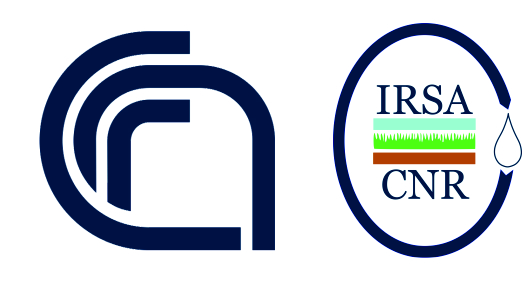| Abstract | Arsenic mobilization in groundwater systems is driven by a variety of functionally diverse microorganisms and complex interconnections between different physicochemical factors. In order to unravel this great ecosystem complexity, groundwaters with varying background concentrations and speciation of arsenic were considered in the Po Plain (Northern Italy), one of the most populated areas in Europe affected by metalloid contamination. High-throughput Illumina 16S rRNA gene sequencing, CARD-FISH and enrichment of arsenic-transforming consortia showed that among the analyzed groundwaters, diverse microbial communities were present, both in terms of diversity and functionality. Oxidized inorganic arsenic [arsenite, As(III)] was the main driver that shaped each community. Several uncharacterized members of the genus Pseudomonas, putatively involved in metalloid transformation, were revealed in situ in the most contaminated samples. With a cultivation approach, arsenic metabolisms potentially active at the site were evidenced. In chemolithoautotrophic conditions, As(III) oxidation rate linearly correlated to As(III) concentration measured at the parental sites, suggesting that local As(III) concentration was a relevant factor that selected for As(III)-oxidizing bacterial populations. In view of the exploitation of these As(III)-oxidizing consortia in biotechnology-based arsenic bioremediation actions, these results suggest that contaminated aquifers in Northern Italy host unexplored microbial populations that provide essential ecosystem services. |
| Text | 462255 2021 10.3389/fmicb.2021.634025 Scopus 2 s2.0 85103574589 arsenic groundwater arsenic dissolution arsenite oxidizing bacteria Pseudomonas spp. Adaptation of Microbial Communities to Environmental Arsenic and Selection of Arsenite Oxidizing Bacteria From Contaminated Groundwaters Zecchin S.; Crognale S.; Zaccheo P.; Fazi S.; Amalfitano S.; Casentini B.; Callegari M.; Zanchi R.; Sacchi G.A.; Rossetti S.; Cavalca L. Dipartimento di Scienze per gli Alimenti, la Nutrizione e l Ambiente DeFENS , Universita degli Studi di Milano, Milano, Dipartimento di Scienze per gli Alimenti, la Nutrizione e l Ambiente DeFENS , Universita degli Studi di Milano, Milano, Italy, , Italy; Water Research Institute, National Research Council of Italy IRSA CNR , Rome, Water Research Institute, National Research Council of Italy IRSA CNR , Rome, Italy, , , Italy; Water Research Institute, National Research Council of Italy IRSA CNR , Rome, Water Research Institute, National Research Council of Italy IRSA CNR , Rome, Italy, , , Italy; Dipartimento di Scienze Agrarie e Ambientali Produzione, Territorio, Agroenergia DiSAA , Universita degli Studi di Milano, Milano, Dipartimento di Scienze Agrarie e Ambientali Produzione, Territorio, Agroenergia DiSAA , Universita degli Studi di Milano, Milano, Italy, , Italy Arsenic mobilization in groundwater systems is driven by a variety of functionally diverse microorganisms and complex interconnections between different physicochemical factors. In order to unravel this great ecosystem complexity, groundwaters with varying background concentrations and speciation of arsenic were considered in the Po Plain Northern Italy , one of the most populated areas in Europe affected by metalloid contamination. High throughput Illumina 16S rRNA gene sequencing, CARD FISH and enrichment of arsenic transforming consortia showed that among the analyzed groundwaters, diverse microbial communities were present, both in terms of diversity and functionality. Oxidized inorganic arsenic arsenite, As III was the main driver that shaped each community. Several uncharacterized members of the genus Pseudomonas, putatively involved in metalloid transformation, were revealed in situ in the most contaminated samples. With a cultivation approach, arsenic metabolisms potentially active at the site were evidenced. In chemolithoautotrophic conditions, As III oxidation rate linearly correlated to As III concentration measured at the parental sites, suggesting that local As III concentration was a relevant factor that selected for As III oxidizing bacterial populations. In view of the exploitation of these As III oxidizing consortia in biotechnology based arsenic bioremediation actions, these results suggest that contaminated aquifers in Northern Italy host unexplored microbial populations that provide essential ecosystem services. 12 Published version http //www.scopus.com/record/display.url eid=2 s2.0 85103574589 origin=inward Adaptation of microbial communities to environmental arsenic and selection of arsenite oxidizing bacteria from contaminated groundwaters. Zecchin_2021_FM.pdf Articolo in rivista Frontiers Research Foundation, 1664 302X Frontiers in microbiology Frontiers in microbiology Front. microbiol. Frontiers in microbiology simona.rossetti ROSSETTI SIMONA stefano.fazi FAZI STEFANO stefano.amalfitano AMALFITANO STEFANO barbara.casentini CASENTINI BARBARA simona.crognale CROGNALE SIMONA |
